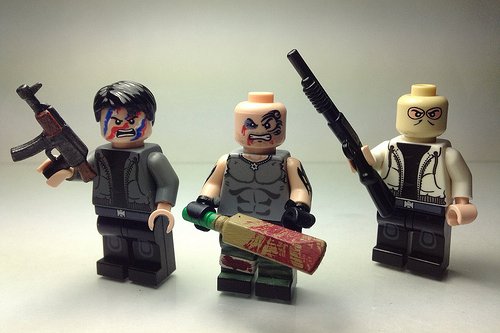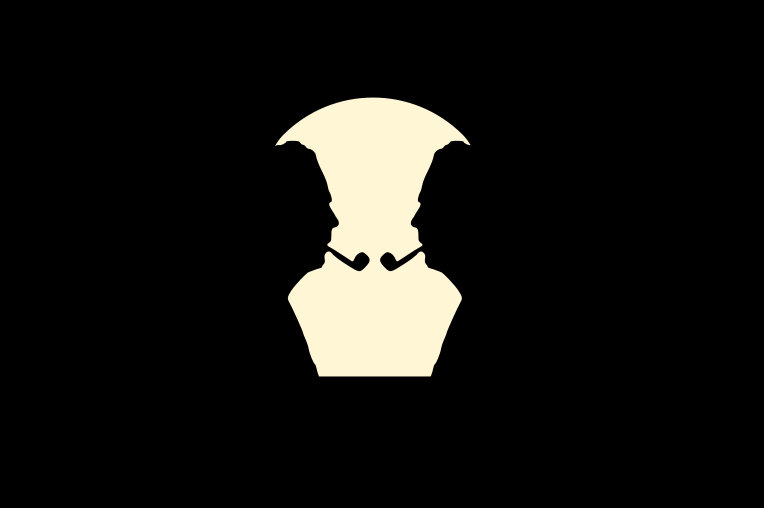This text is my reaction to some questions I received on Facebook’s Social Media group. It turns out that there are lots of people who in fact have never looked “under the hood” of Facebook but they make a professional use of it on a daily basis.
I’m not trying to be judgemental, because after all, nowhere does Facebook communicate directly that our content is filtered by an algorithm. Edge Rank to be precise. This is the name of the mechanism that gives and takes on Facebook. It rules and decides what people see and what they can’t. Despite that, it is quite flexible and you can suit it to your needs even without paid promotion.
How? You will find out about this and more in this post. I will also try to explain briefly how ER works. Let’s go!
Anatomy of the algorithm
Edge Rank is responsible for displaying all posts on Facebook and also indirectly for posting sponsored content (it is more likely that we would see posts from a brand that we interact with). It consists of three components which describe Page/Friend Rank in relation to us, namely the user.
Affinity – this is an index that describes our relationship with the posting subject. How often we’ve liked the posts of this page, how often we’ve shared the posts, and also whether we’ve been hiding the posts from this page.
This is why when Facebook users say things like “I liked your page, why I can’t see your posts?” I become immediately sympathetic. If you haven’t been an active fan, you shouldn’t be surprised about that. FB decided that apparently you want to identify with a given brand (that’s why you like it) but you don’t want to interact with it. In a situation like that the page disappears from your newsfeed and is replaced with the one whose posts you like. So when we want to rekindle our relationship with a given fanpage in a simple way, we should go to its timeline and simultaneously like a couple of posts.
First, the algorithm identifies that (which is of an utmost importance!) we entered the brand’s profile, and this happens not so often. Second, we are interacting with it. This works pretty much like The Sims where when our friendship with someone has weakened one need only to invite that person and talk with her/him for a couple of hours so as to once again have the best friend for life.
Weight – some of you probably know about it, but for clarity’s sake I will mention it anyway. Posts on Facebook have various weights. Algorithm counts photos differently from text posts. The post that gets hundreds of likes in five minutes will gain more range that the post which received only ten likes in a week.
Weight also includes such factors as whether a given post was shared by someone who has a wide and active network of friends/followers or whether all of a sudden a post has been hidden en masse because the users didn’t like it.
What types of posts are most attractive for Facebook’s algorithm?
- Photos/native video – in particular Facebook’s native video is treated in a special way, because FB promotes such posts in order to overthrow YouTube.
- Links – here what matters is the source quality, whether it is a website/blog with many social media interactions, its credibility, etc.
- External video (YouTube, Vimeo) – these are also types of links but due to the fact that Facebook tries to push its native video, clips from YouTube have a much smaller range
- Text posts – the greatest range but potentially the lowest engagement.
As I mentioned before, post weight also includes the activity below the post, and they are classified in the following ways:
- Sharing – generates additional range, and according to Sotrender and their Interactivity Index it gets 16 points
- Comments – here we have 4 Interactivity points
- Like under the post – 1 Interactivity point
- Click on the post – this could be both using link to go to the website in order to read the whole article or simply opening an image; this interaction is not scored but it influences the range of post and is taken into account by algorithm when Affinity is calculated.
Time Decay – this component of Edge Rank describes when our last interaction with the page took place. It also describes time that passed since the post was published. So if we have interacted with a page or a friend quite recently it is likely that the post would be displayed. In case there was no interaction for a fairly long time then the post’s weight is a key factor.
The more popular and the “heavier” the post is, the bigger the chance that it will suddenly break through the mass of other publications even if we haven’t seen anything from a given publisher for a long time.
Fluidity of content
Generally speaking, Edge Rank is about over 10,000 various variables that differentiate our social media relations with brands and friends. Facebook also added two variables which would increase the visibility of posts that could be treated by the user as relevant and due to that should be displayed even if they do not fully meet Affinity requirements (probably somewhere inside Facebook, there is the score where for us a brand X has 10 points, and a friend Y has 20 points, but so far I haven’t managed to find such a detailed description of the algorithm):
Last Actor – this variable is related to our last 50 actions. It matches a part of posts even if according to Edge Rank they shouldn’t be displayed.
Let’s say that 15 of those actions were comments on the page of a friend that we don’t have a very strong relationship with. If it was so, then the next posts from his/her page would be shown. In case we won’t be interested in them, the algorithm will throw them into the depths of the newsfeed – let him/her post conspiracy theories and feed them to others (haha).
Story Bumping – this one is very irritating. For instance, let’s take someone’s post, which results in massive interaction. This particular post wasn’t displayed on my wall or I wasn’t active back then. Despite that, Facebook decided that this is an interesting piece of information from the user with whom I have high Affinity. In addition, this post is heavy as hell, because it is shared a lot. So, let’s say that this particular post is about something I’m not interested in. I saw it once, and I skipped it. But FB all the time pushes this post to the top because the other friend wrote a comment and because it has more and more likes.
Unfortunately, if I react to it in a negative way (i.e. I will hide it), this will result in minus Affinity points. What might happen next is that the person that posted it will disappear from my feed.
How to choose content?
Ok, we now know what makes our posts look this or that way. We know rules of the game. But how does the ball we are going to play with look like?
I will only hint that each page has its unique Affinity and Weight in relation to users. What I wrote above is just a model description. It is quite frequent however that, for example, a fanpage, that publishes only text posts has unbelievable range and number of interactions. According to the guidelines it should meet only one of the objectives. It means that the situation is a bit more complicated than we thought. Hopefully, you can quickly check which medium works best on your profile.
First, go to your profile stats (Facebook Insights). Open the tab “Posts” and then “Types of posts”. What can we see here? Above is the analysis of my blog profile. Video posts have the greatest range. They are also the most engaging ones. In turn, statuses have greater range than photos but they engage only slightly better. Can you see the difference between what I have on my profile and Edge Rank guidelines? Of course, I can check now whether returning to indexes as Mark Zuckerberg commanded will make my page better. It could as well turn out that I must carry on with what I’m doing right now. In my case I seriously need to start adding videos.
When planning your posts and thinking about what medium you should use, you can check Sotrender where in the “Post Insights” tab you can find information about “Post Life Cycle”. This is information about how long the post has been gaining its range, how the pattern of activity looked like and when it stopped being displayed. By correlating this with the type of medium you can check what types of posts have the greatest impact on the range/interaction gains or on both of these indexes.
Good practices
Finally, a couple of truisms. I hope that some of you will find them useful, and that you will use them to help your profiles to flourish and, of course, to take leading positions on Fanpage Trends.
- Keep in mind that appropriate posting times are very important. This factor has a great impact on how often our posts will be displayed. If we publish at the same time as our competition, it is likely we could be defeated in the Affinity battle. Guide to posting times can be found here – When to post on Facebook
- Analyze in real time how range and interaction stats look like. It will help you to figure out how often you should post and in turn it will help you to reach your fans more efficiently. Perhaps, in order to achieve the same results you only need two posts per day instead of six.
- Don’t create too offer-like posts, and avoid click-inducing titles. If the content is misleading or too sales-like, Facebook won’t hesitate to cut the range of such a post.
- Don’t play with the post content. Facebook detects when you try to cheat algorithm and when you post the link in the text part without using a thumbnail. Some time ago, it worked quite efficiently, but now FB wants administrators to play a bit “fairer” and more visually. So if you go for the link, then choose an eye-catching thumbnail. If you go for text, then do so without redirecting from FB.
Further, I recommend you to read articles written by Buffer and Socialbakers. They shed a bit more light on how Edge Rank works. There is never too much knowledge about this topic. It is good to know what’s changing and how to adjust posting strategy to the changing environment. Taking advantage of some “loophole” can give you a better position in algorithm for a moment but you will need to stabilize it anyway having at the back of your mind the rules of Facebook.
If you liked this post, you might also be interested in: seven marketing tips for startups.






















